#Nestore Mangone
Text
New to Me - June 2023
New to Me #boardgames - June 2023 @tgryphgames @gmtgames @AllplayHQ @oinkgms @ArcaneWonders
June has been a busy month, and not seemingly conducive to getting new board games played.
We missed a Sunday game day (Father’s Day) and for two of the other three Sundays, our main “new games” guy wasn’t able to come.
However, we maximized that one date to get three games in and we had another day where another guy brought a game that I had been wanting to try for a while.
Add a new solo…

View On WordPress
#AllPlay#Area Majority#Darwin&039;s Journey#Gina Willis#GMT Games#Jerry White#Jun Sasaki#Lunch Time Games#Memory Games#Nestore Mangone#Oink Games#Order Overload: Cafe#Pollen#Reiner Knizia#Simone Luciani#Skies Above Britain#Solo Games#Thundergryph Games#Tile-Laying Games#Worker Placement Games
0 notes
Text
À espreita de... Autobahn
À espreita de… Autobahn
A Alley Cat Games apresentará vários títulos em Essen este ano, mas de todos o que mais se destaca em termos de hype é Autobahn.
Imagem Alley Cat Games
Autobahn é um jogo de Fabio Lopiano e Nestore Mangone com ilustração de Javier González Cava para 1 a 4 jogadores com mais de 14 anos e uma duração aproximadas de 90 a 150 minutos.
Autobahn é um jogo de estratégia económica son a temática da…
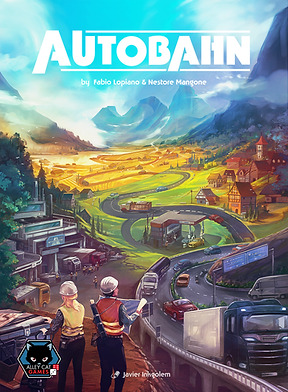
View On WordPress
0 notes
Text
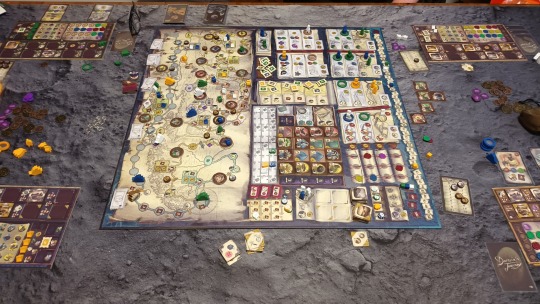
Game Night
Darwin’s Journey
by Simone Luciani and Nestore Mangone
3 notes
·
View notes
Text
Little Green Apples (Newton)

Never have I believed that a non-metaphorical apple actually fell onto Sir Isaac Newton’s head, stirring those legendary first musings regarding gravity. Although, I’m delighted to learn that–according to Google, at least–he was inspired by a falling apple way back in 1667.
Apparently, Sir Isaac returned to his family’s home after an unfortunate spat of bubonic plague closed his University (it happens), and he saw a very literal apple fall in an orchard, the apple that forced him to ponder thusly: “Oye señor, why’d that thing fall straight down and not do some sorta loop-de-loop or whatsname?”
Newton (2018)
Designed by Simone Luciani & Nestore Mangone
Art by Klemens Franz
Published by CMON Limited
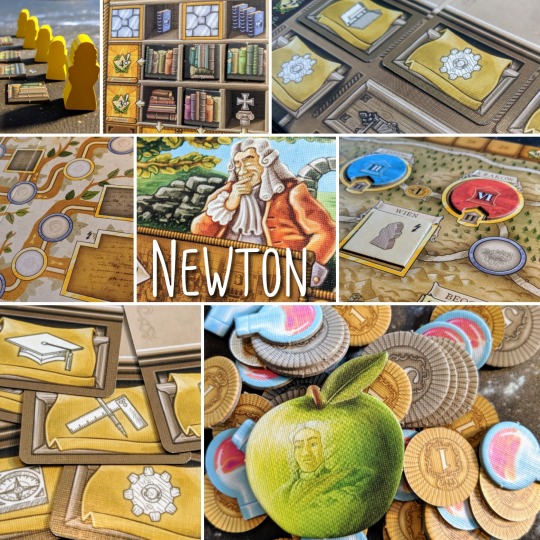
This is quintessential euro territory: lots of tracks to move on, lots of small cardboard pieces, lots of brown. Yeah, lots of brown, but we’ll come back to that.
Newton is a game about the scientific revolution. The game may have taken its name from the man responsible for penning Philosophiæ Naturalis Principia Mathematica back yonder in 1687, but Newton (the game) also includes a handful of other scientific contributors like Kepler, Copernicus, Fahrenheit, Halley, and Pascal. And while there are a number of scientific masters in the game, the real heart of this mechanical puzzle comes from action selection, minor deck building, and optimizing your turn to score the most points.
Lowdown (How to Play–in a Nutshell)
Like so many euros, the point of the game is to score points. Newton is played over six rounds and in each round players will alternate playing action cards from their hand and taking the action. Simple enough. The actions are 1. Work to earn money; 2. Improve technology; 3. Travel on the big map; 4. Take Lessons, aka buy a card to add to your hand; 5. Study, aka meeting conditions to work towards end-round bonuses. The first three actions are essentially done by moving pieces or workers on different tracks and gaining bonuses based on where you stop. Working earns you coins based on how many spaces you moved, technology gives you bonuses like board improvements or coins depending on where you stop, and traveling allows you to move on the map and helps you meet studying conditions.
Studying is hard to explain, and I was very confused by it when I first read the rules. Essentially, in addition to the main game boards (of which there are two), each player has their own small player mat. On that mat is a bookshelf made up of individual spaces that can be filled in with books. In order to fill a space, you must meet the requirements listed in that space. When it’s completed, you can cover the space in question with a small tile. Requirements can be that you’ve visited specific cities or have a specific number of books on cards that you’ve played. When you completely fill a row or column on the shelf, you’ll gain bonuses each round, whether that be points or money or other niceties. Studying is really one of the less enticing actions, probably because it’s the most abstract, but it’s really the scoring engine of the game.
At the end of each round, you will have five action cards on your player mat, the five cards you played that round. During cleanup, you must take one of these cards and tuck it under your board, so only the icon for that specific action shows. And here’s a really great part of the game: the more icons that are visible on your board for a specific action, the stronger the value of the action you can perform. Let me explain.
Let’s say that at the end of round one, you tucked an icon for Lessons (the action that lets you buy new cards). When you play a lessons action card in round two, you’ll have two visible icons, one on the card you tucked in round one and one on the card you played in round two, meaning you can buy better cards than if you only had one visible icon. This works with all of the action icons. More work icons mean you can move farther, thus earning more money; more technology actions mean you can advance farther on the tech track, thus moving to potentially better bonuses; more travel icons mean you can move farther on the map, hopefully getting your travel meeple to those cities you needed to reach; and more study icons allows you to reach different shelves on your player mat.
As the game continues, you’ll cover more shelves, visit more cities, advance on the tech track to scoring objectives, and finally meet those scientific masters, all allowing you to score those sweet, sweet euro points.
Tea for Two (Scaling for Two Players)
Like I said, this is quintessential euro territory. I don’t want to lie; this game is multiplayer solitaire. I think the only difference in a solo game from a four player game is game length. Seriously. The rulebook contains no scaling beyond laying more tiles for higher player counts.
I Like Dirt (The Bad Stuff)
The graphic design/artwork are the main lightning rod for criticisms here. When you set the game up, it’s a lot of brown. The graphic design is very functional, if a little drab. It’s also funny that the art is by go-to euro artist extraordinaire Klemens Franz, known for his nice cartoony style seen in most Uwe Rosenberg games. That being said, there seems to be so little of his art present in the actual game, it feels like a bit of a waste.
Not to sound like a big square, and I know this is the ‘bad stuff’ section, but I really like the theming here. The idea of working in a university or inventing technology or simply learning (!!) is unique in a world of games about farming or civ building or trading in the Mediterranean. Honestly, while I don’t really understand what I’m thematically doing when I play Newton (Come on, you say, you’re doing science!), I like that it’s a game about science. But this is probably going to be a bad thing for most people. No really, what are you doing in this game??
Beyond aesthetics, one thing I’m not sure about is how viable each action is. Player mats are unique, which I like, but I wonder if the player who starts with the Study icon on their starting mat has a big advantage (especially compared to the player who starts with something like Working on their mat). I fear all actions are not created equal in Newton, and this is really the main problem. And while it’s definitely a problem, it’s not enough to hamper the experience–yet. When I feel that certain actions are underpowered, I often wonder if I simply haven’t learned how to maximize that actions benefits. While studying seems to be the best road to victory, I wonder if alternate paths will present themselves over further plays (e.g. I do think that travel’s strengths are more understated).
[It] Blinded Me with Science (The Good Stuff)
As with Great Western Trail (2016), Newton proves that–for me, at least–deckbuilding is a great mechanic, but perhaps best utilized in a secondary capacity. Meat and Potatoes deckbuilders like Star Realms (2014) or Dominion (2008) tend to feel a bit rote after repeated plays, but when you implement deckbuilding as one mechanic among many, I feel it helps freshen a mechanic that gets a bit worn out. If deckbuilding is all about building combos, making that deckbuilding one cog among many in a machine really opens the door to so many other interesting interactions, and that’s definitely true about Newton. Cards you’ll purchase by playing the lesson action have not only the action icon, but also different bonuses on the top half of the card, giving you colored books to complete requirements while studying, or bonuses you’ll gain each time you play the card. Keeping in mind what cards you’ve previously tucked from your set starting hand, you’ll definitely need to buy specific cards as the game continues or else you won’t be able to take certain actions. At the end of each round, however, all unpurchased cards are removed and a new set is laid out to buy for the next round, meaning that if you see a card you want, you have to buy it immediately. Again, the deckbuilding in this shouldn’t be overstated, it never feels like a huge part of the game, but if is impossible to ignore.
Set-up in Newton is also interesting. Everything on each board is variable. When you first pull out the two game boards and open them, you’ll see nothing but empty spaces. All bonuses, city icons, tech developments, and objective bonuses are laid out during set-up, so they’ll change in every game, making games feel similar, but not play similarly, which is something I really appreciate.
Speaking of variability, the scientific masters in the game, of which there are 20 total, each offer powerful bonuses. At the start of the game, each player has a hand of four, and you’ll pick-and-pass draft them (a la 7 Wonders (2010)) until you have a starting hand of four. You’ll need to find ways to activate these masters throughout the game, and if you want to get your money’s worth from them, you’ll really need to work to activate them. Activating masters is accomplished through excelling at different avenues in the game. For example, once you’ve traveled to a certain number of unique cities, you’ll get to activate a master. Only ever using eight of the possible 20 master cards in a game means you’ll see limited repeats.
Scoring objectives are one more facet I’ve glossed over, and while I won’t go into too much detail on how they work, these are also places on the board that are laid out variably during each game’s set-up. Being as they never change during a game, you are able to optimize play throughout a game so that when you reach a scoring objective, you’ll be able to max your points.
Perhaps the sweetest surprise from Newton is how fast a game it is with two players, coming in at an hour or so. That variable set-up will slow you down, unfortunately, making said variability a bit of a double-edged sword, but I think it’s more than worth the time based on what it offers.
The End (Final Thoughts)
Newton has a nigh legendary pedigree within the hobby, as one of its designers is known for co-designing perennial euro favorites Tzolk’in (2012), The Voyages of Marco Polo (2015), Grand Austria Hotel (2015), and Lorenzo il Magnifico (2016), all hovering around 100 or better on the Board Game Geek top 100 rankings. In all honesty, Newton is our introduction to this designer, making me infinitely more curious to play the other games. From many plays of Newton, and plenty of reading online about the others, I think Newton will be seen as the dark horse here, because while it is very solid, it seems to be described as the least remarkable among these five games. It’s interesting to see how groundbreaking Tzolk’in (2012) was seven years ago, versus how steady and solid Newton is today. Like Kraftwagen (2015), Newton isn’t reinventing any wheels, but rather combining many strong mechanics into one solid package, and in doing so turns out to be a workhorse of a game. In twenty years, it may not be looked on as a revolutionary game like Tzolk’in (2012), but it will give you a tight, rewarding, and reliably good experience.

Player One
Eric
0 notes
Text
The last couple of games that I have talked about here were 2020 releases. But I’ve also been fairly successful in the last couple math trades, so now I’m going to have some older (in one case, much older) games to share. Today’s game is Newton (2018), by Simone Lucciani (previously discussed - Barrage) and Nestor Mangone. (This particular team apparently likes science-themed games. They have a Kickstarter now for Darwin’s Journey.)
Newton is a hand-building game. You start with six fairly pedestrian cards, of which you will play five in a round. You can acquire better cards as you go, but at the end of each round, you must tuck one of the cards you used halfway under your player board, so that continues to provide an extra icon of its type in future turns, but you can no longer use it to choose that action.

First up is the tree of knowledge board, where your students will study various subjects for various bonuses and endgame scoring.
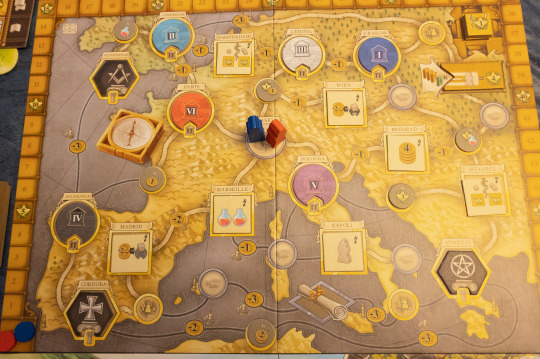
Then we have the map, where your scholar will travel to various cities in pursuit of knowledge (and bonuses, and endgame scoring).

Here is the display of cards than be acquired. (The starting cards only have the action icons on the bottom half; they don’t have bonuses on the top half.)
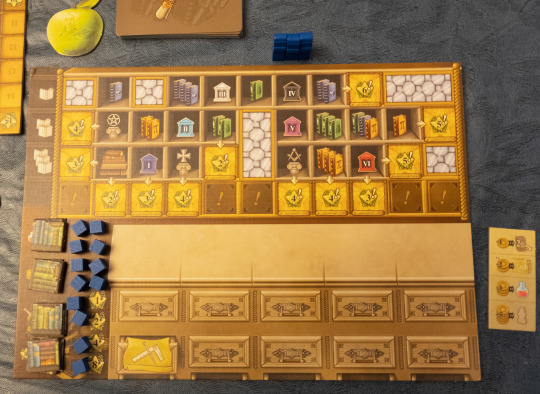
The player board consists of a workbench, where you lay out your actions, and a bookshelf, that you are trying to fill up with books you’ve acquired (for points and other bonuses.) The apple is, naturally, the first-player marker.
5 notes
·
View notes
Photo
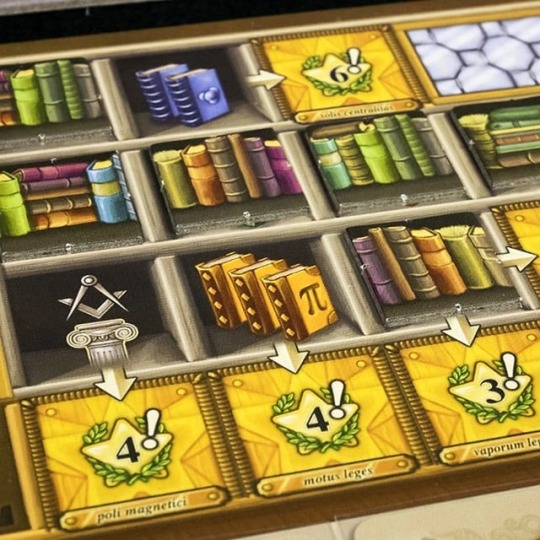
Newton (2018, Nestore Mangone y Simoni Luciani) Un eurogame de peso medio en el que, mediante una peculiar mecánica de selección de acciones iremos investigando, viajando, acumulando libros y trabajando para conseguir monedas. Todo en pos de convertirnos en el científico más reputado. Si queréis saber más sobre el juego, tenéis disponible la tochorreseña correspondiente en el blog. #Newton #bgg #boardgames #brettspiel #juegosdemesa #jocsdetaula #jeuxdesociete #jokoak #tabletopgames #boardgaming #jeudeplateau #boardgamegeek #jogosdetabuleiro #MisutMeeple (en Gijón, Asturias) https://www.instagram.com/p/BtQ3XuMDBzR/?utm_source=ig_tumblr_share&igshid=1gw7xk7t0plfl
#newton#bgg#boardgames#brettspiel#juegosdemesa#jocsdetaula#jeuxdesociete#jokoak#tabletopgames#boardgaming#jeudeplateau#boardgamegeek#jogosdetabuleiro#misutmeeple
0 notes
Text
Dale Yu: Review of Masters of Renaissance
Masters of Renaissance (Lorenzo il Magnifico: The Card Game) Designers: Simone Luciani and Nestore Mangone Publisher: Cranio Creations Players: 1-4 Age: 12+ Time: 45 mins Times played: 3, with review copy provided by Asmodee NA I was really excited prior … Continue reading →
Dale Yu: Review of Masters of Renaissance published first on https://sixchexus.weebly.com/
0 notes
Text
Top 30 Anticipated at Essen Spiel 2019 (#10-1)
Now is the moment you’ve all been waiting for--the top 10! Don’t forget my usual disclaimer that any photos seen here were taken from www.boardgamegeek.com (BGG). Thanks to BGG users and publishers for posting their information and photos there.
10. Rune Stones - Published by Queen Games with artwork by Dennis Lohausen, this game caught my eye because of the well respected designer, Rüdiger Dorn. He previously brought us Istanbul, Karuba, Las Vegas, and Montana, just to name a few popular titles. This is a deck construction/ destruction game where 2-4 players age 10+ will spend approximately an hour building artifacts and rune stones to gain points. The first person to teach 65 points triggers end game, and whoever has the most points is the winner.

The publisher calls this game a deck builder, but deck destruction is built right into the game. Whenever you choose to play cards, you have to play 2 together, and the higher numbered card is removed from your deck. This means you have to be careful about how you play your cards if you want to use its effect more than once per game. Your other options for action are to acquire new cards or forge artifacts/create stones.
I'm confident in Rüdiger's ability to create engaging games, and I'm looking forward to eventually playing this one. My one hesitation is because of the publisher, Queen Games. I Kickstarted one of their games a few years ago and didn't have a positive experience.
9. Mystery House: Adventures in a Box - Cranio Creations offers a physical twist on "escape room" games with this design by Antonio Tinto and illustrations by Daniela Giubellini and Alessandro Paviolo. In this app-assisted game, 1-5 players age 14+ will spend an hour searching for clues to escape the labyrinth-like box.
The game box itself is broken into a grid of sections marked by letters and numbers. During setup, cards are inserted into specific sections in the grid. Players will look at the cards and box sides, looking for anything unusual in the scenes visible to them. As cards are removed from slots during gameplay, images that were previously blocked from view will become visible. You have to look inside the box at all angles in order to discover some of the hidden clues. This concept is definitely different, and I'm interested to experience it, myself.
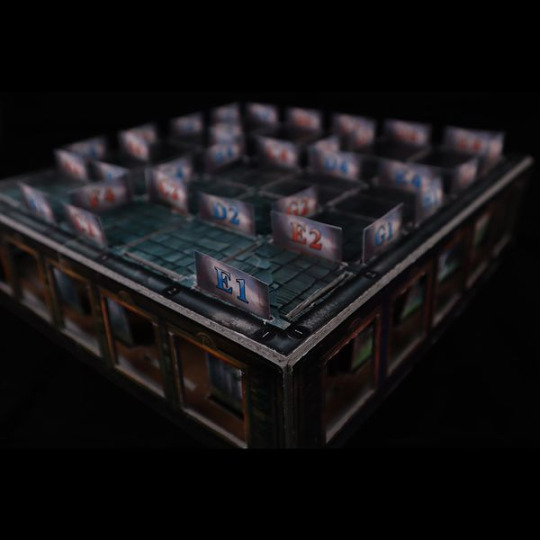
8. Ocean Crisis - Designed by Jhao-Ru Chen, Hsien Pu Jan, and Chi Wei Lin with artwork by Meng-Jung Yang, this game brings environmental conservation to the forefront. The publisher is Shepherd Kit, Inc. In this game, 2-5 players will work together to prevent trash from polluting rivers and oceans. If they can survive 6 rounds, which will take approximately 30-60 min., then all players win! Players can spend actions trying to move their meeples to certain spots on the board to unlock bonus powers that will help them with cleanup. This looks like a challenging and fun game with unique game mechanisms that distinguish it from being a Pandemic clone. I also like the theme. I'm happy to see more games tackling such an important subject.

7. Flotilla - Published by WizKids, designed by J.B. Howell and Michael Mihealsick, and illustrated by Bartek Fedyczak, this is a game for 3-5 players age 14+ that takes 1.5-2.5 hours to play. Be prepared to sit down and play for awhile.
What's notable about this game is that there are two modes of play: Sinkside and Skyside. Everyone starts out on Sinkside as a fleet commander, exploring ocean tiles, collecting resources, and rescuing people from the sea. At any time, you can flip over to Skyside. You'll develop trade with players still on Sinkside, conduct research, and build sonar stations. It sounds to me like Sinkside is more focused on exploration and pick up & deliver, whereas Skyside might be more about trading and engine building, but I could be wrong about that. I need to watch some YouTube reviews of this game to get a better idea of how the game mechanisms work.
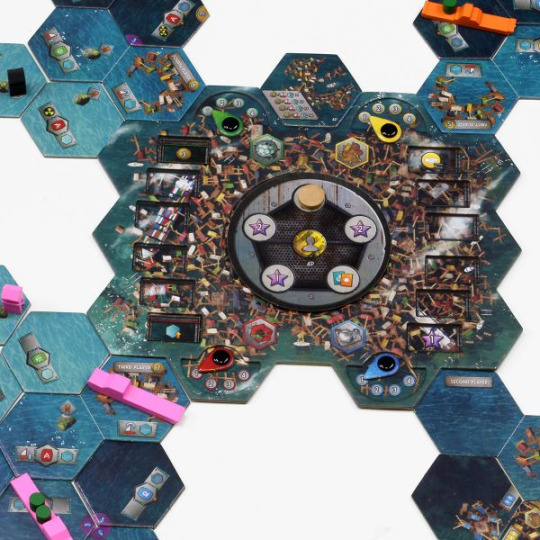
6. Maracaibo - Published by Capstone Games, this is the big game of the year by popular designer, Alexander Pfister. The artists are Fiore GmbH, Aline Kirrmann, and Andreas Resch. The game supports 1-4 players age 12+ and takes 1-2.5 hours to play. Players sail around the Caribbean playing different actions, such as delivering goods. I don’t know much about this game, but I like Alexander Pfister as a designer, and I’m hoping for something that feels like Great Western Trail.
5. Masters of Renaissance: Lorenzo Il Magnifico The Card Game - This game is published by Cranio Creations, designed by Simone Luciani and Nestore Mangone, and illustrated by Klemenss Franz and Roberto Grasso. Both Luciani and Franz worked on the predecessor, Lorenzo Il Magnifico. This card game is for 1-4 players age 14+ and takes about half an hour to play.
I'm interested for one reason alone. Taken from the BGG description, which likely comes from the publisher, this card game "recreates the atmosphere of Lorenzo il Magnifico with simple rules and a limited duration."
Lorenzo the card game is a card drafting set collection game with some kind of marble dispenser track reminiscent of Potion Explosion. I’m not sure how this fits into the gameplay, but I’m really excited to find out!

4. Fuji Koro - Published by Game Brewer, designed by Jerome Demeyere, and illustrated by Miguel Coimbra, this co-op is for 1-6 players age 12+ and takes 1-2 hours to play. The dragon miniatures that come with the Deluxe version look fantastic! I'm wondering why CMON didn't publish this beautiful game with minis (c'mon, Cool Mini or Not, pick up these cool projects). In this game, players are Samurai who are trying to rescue precious artifacts and monks from an active volcano before it erupts!
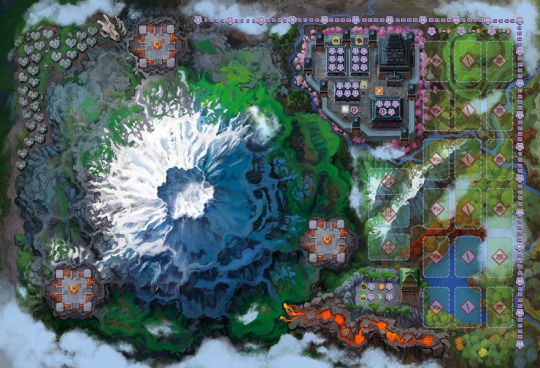
As another reviewer (I think Tom Vasel) already said, why did these monks decide to build their sacred temples inside the volcano in the first place? Oh, well, whatever the reason, it's making me want to play this stunning looking board game. Hopefully, gameplay lives up to its looks.

3. Escape Tales: Low Memory (or Escape Tales: The Awakening) - Board&Dice published this "escape room" style card game from designers Jakub Caban and Bartosz Idzikowski. Two artists worked on this game, Jakub Fajtanowski and Magdalena Klepacz. It supports 1-4 players age 14+. I'm not listing the game time here because estimated game length listed on BGG seems unreasonable, unless the publisher meant for the times to indicate playing all three stories in the box back-to-back, as opposed to the average length of time to play a single story.
What I like about this escape room game is that players will get to experience the main plot from three different characters' perspectives. I think that's an interesting twist in this genre.
2. Merchants Cove - Published by Final Frontier Games and designed by Carl Van Ostrand with art by Mihajlo Dimitrievski, this asymmetrical game is for 1-4 players age 14+ and takes 45-75 min. to play. What's different about this game is that every player is playing their own mini game. It reminds me of Root in that way.
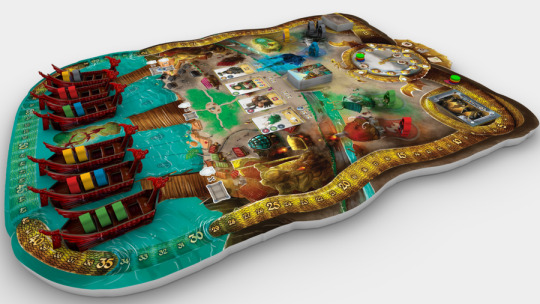
From BGG, "Using a unique set of role specific components and gameplay mechanics, each merchant will compete to satisfy the demands of the bold adventurers who arrive each day to spend their hard earned coin at the famous market piers." This game includes a time track and rondel. Merchants (aka the players) must pay attention to how full boats are with customers, because once the boat is full, customers will arrive at the markets to buy goods that the players have spent time making. Which merchant will reign supreme?
1. Atlantis Rising, 2nd Ed. - This game is published by Elf Creek Games and designed by Galen Ciscell and Brent Dickman. The infamous Vincent Dutrait provided artwork, as well as Peter Gifford. This co-op game is for 1-7 players age 10+ and takes 1-2 hours to play.
The board is a funky shape; it looks like a starfish. It reminds me of Forbidden Island in the way that the island is slowly sinking. In this game, the outer edges of the starfish will sink first. You have to be careful about where you deploy your meeples. Although the shoreline provides more rewards, if your meeple winds up on flooded land, all their actions will be for naught.
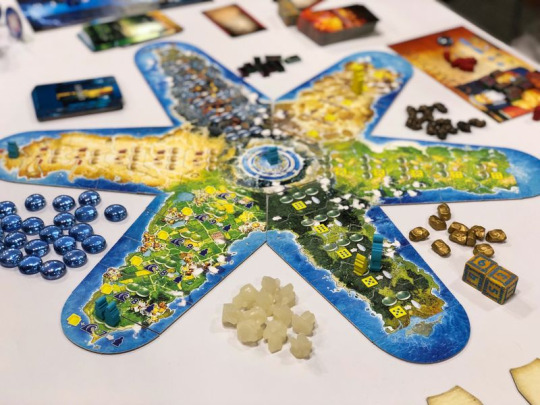
I never heard of the original edition, but from what I've gathered, the second edition is more than just a prettier implementation of the original game. Some new rules are introduced, as well.
This concludes my Top 30 of Essen list. I hope you enjoyed it!
Stay tuned for my next blog post. I'm thinking about tackling big themes in boardgaming year over year. If any stand out to you, let me know in the comments.
0 notes
Text
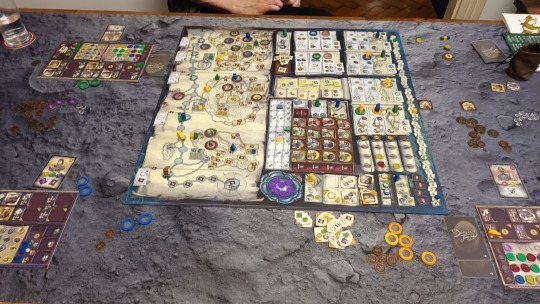
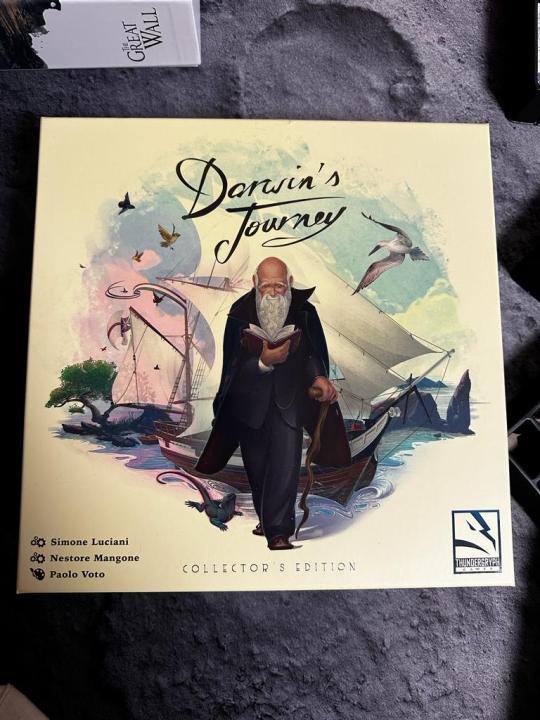
Game Night
Darwin’s Journey
by Simone Luciani and Nestore Mangone
3 notes
·
View notes
Text
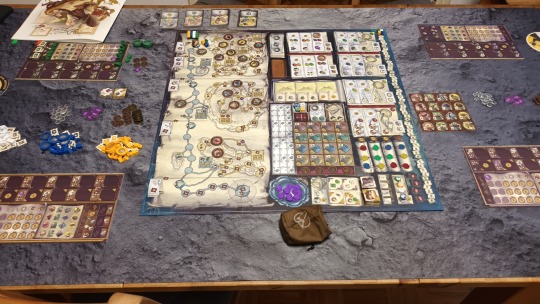
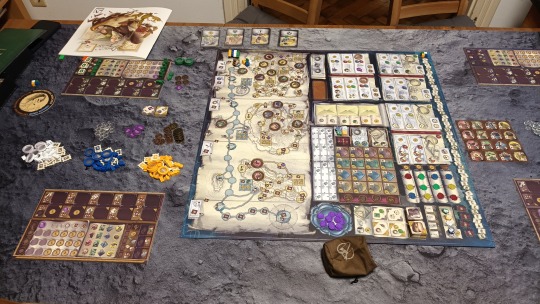

Game Night
Darwin’s Journey
by Simone Luciani and Nestore Mangone
2 notes
·
View notes
Text



Game Night
Newton (Nestore Mangone;Simone Luciani and Klemens Franz)
1 note
·
View note